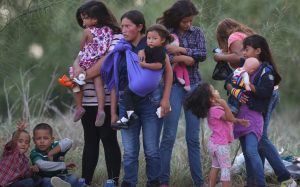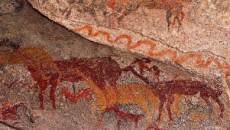Álvaro Rocha for Somos
Translated and adapted by Nick Rosen
Peru This Week
When Saul Escobar was punished for daring to speak his mother tongue inside a Ucayali school, it never occurred to him that one day he would be a professor in a university and would teach in Shipibo, the very language that had so exasperated the mestizo director of his school.
Saul remembers that with a smile, the same smile that he flashed two decades ago when Gerardo Zerdin, then the parish priest in Atalaya, decided to support him so that he could receive a university education in Lima. “I want to study, but I don’t have money,” Saul had told him.
Saul has come a long way since then; not only is he a professor at the Universidad Nopoki, but he is about to get his masters degree.
‘I have come’
Even though the idea had been bouncing around his head since the 1990s, it was only in 2005 that Zerdin, the bishop of San Ramón, with jurisdiction covering all of Peru’s central jungle, put his plan in motion. He approached Monsignor Lino Panitza, the bishop of Carabayllo and founder of the Universidad Católica Sedes Sapientiae (UCSS), and asked him to help achieve his dream of creating an educational center for the indigenous population in Atalaya.
Having lived with various ethnic groups in the Amazon, and especially with the Shipibo, Zerdin observed that the education in the classroom left a lot to be desired, as the teachers came from other parts of Peru, did not integrate into the communities, did not teach in the local languages and disappeared for long periods of time.
So, he thought, the best thing would be if the locals themselves received an education, to later impart it in their communities. Lino Panitza, who shared the idea of providing opportunities for marginalized young people, was receptive, and that same year, an agreement was signed between the vicarship of San Román and the UCSS to create Nopoki (‘I have come’ in Asháninka).
“I don’t have words to express the greatness of Nopoki”
In 2012, four students belonging to the Yine culture graduated from Nopoki with bachelor’s degrees. It was hard work for Remigio Zapata, in charge of Yine grammar and tasked with reviewing all of the daily lessons the students received in that language.
“The course that was hardest for me was math, in part because of the insufficient prior education, but also because words like tangent, parallel and vertical are untranslatable into Yine,” he says.
Juan López, also a professor at Nopoki, had to live up to his Yánesha name, Oth, which means “the strongest, the most powerful,” in order to overcome all of the challenges that life has presented him. When he was a senior Yánesha leader, he was kidnapped for fifteen days by Shining Path; he studied at the La Cantuta University until Fujimori closed it and he had to flee to Pucallpa to continue his studies; later, he was elected mayor of the district of Palcazú, and when he received a bribe from narcotraffickers, they put a price on his head.
He had to leave Peru, assisted by German NGOs. In 2004, he returned to his community in the central jungle to work as a primary school teacher. Now, in Nopoki, he feels fulfilled.
“Here, the students have food, a bed, sanitary facilities, clothes, healthcare, and that’s priceless. Education is the key to development, and the graduates of Nopoki have a complete education; they aren’t just teachers, but rather can create electrical, water and sewage systems. I don’t have words to express the greatness of Nopoki. If I’d had this opportunity, I would be an ambassador or a cabinet minister,” says Juan.
In 2006, Nopoki started as a pre-university center. The communities were very enthusiastic about the project. Roughly sixty students arrived and prepared themselves while the UCSS was creating a bilingual, bicultural program.
In 2007, there was an entrance exam, and the spectrum of participating indigenous nations expanded significantly. By then, professors from UCSS were already teaching, but they did not have the campus they now occupy. All of the activities were carried out in the Atalaya parish house. The rooms held up to 20 students on cots.
In 2008, they received 30 hectares for the campus. The students cleared the land themselves and later helped to build the university. In 2010, they moved to the campus. In 2011, the first class of 26 students graduated with bachelors degrees. In December of 2012, 33 young indigenous students graduated, and they are now at the UCSS campus in Lima to receive their licenses.
Today, the administration of Nopoki is shared. The payroll is the responsibility of UCSS, and the expenses for housing the students and construction are billed to the vicarship. The help from international NGOs and private donations have been important in making the project a reality.
‘He awoke our hearts’
Jovita Vasqúez, a 33-year-old Shipibo-Conibo from the first graduating class, is already a councilwoman in the Atalaya provincial government. She had always wanted to make something of herself, but it was impossible for her to finish her studies in Pucallpa due to a lack of funds.
In her community, located in the district of Tahuanía, they spoke of Monsignor Zerdin as a legendary figure who helped the Shipibo. She let him know that she was interested in studying. That’s how she was considered for inclusion in Nopoki.
“I learned to value my culture. The monsignor awoke our hearts and fed our self-esteem,” says a grateful Jovita.
Diógenes Campos, a 23-year-old Asháninka, is in the second entering class and lives in the indigenous community Aerija. From 2008 to 2010, he lived at Nopoki, but because he has a wife and son, he lives in his community and walks an hour each way to the university.
In the future, he wants to work as a teacher in his community and to promote the development of agriculture, tourism, handicraft production and health.
Unlike earlier generations, Diógenes believes in family planning and only wants to have two children. That is just one of the cultural changes he wants to inspire among his compatriots.
A simple act of justice
The vice rector of UCSS, Dr. Gianbatista Bolis, was surprised by the ability of the indigenous students to pick apart the poems of Rilke, Pavese and Leopardi and associate them with their own experiences. This reinforces an important theory in intercultural anthropology, posited by Alain Touraine, which holds that all languages are dialects of one fundamental language, which is the language of the heart of man.
What’s certain is that a project like Nopoki could not be carried out without the belief that all human beings have the same potential and greatness. There are people with few opportunities, not fewer capacities. Giving them the tools to chart their own destiny is a simple act of justice.
The natives graduated in the municipal coliseum of Atalaya, under the rain but illuminated by knowledge.
Soon, they would leave to study for their licenses in Lima. As if by ritual, they water and take their photos next to an aguaje palm tree that the first class had planted on the UCSS campus in Los Olivos.
The palm tree has grown, and so have they.





